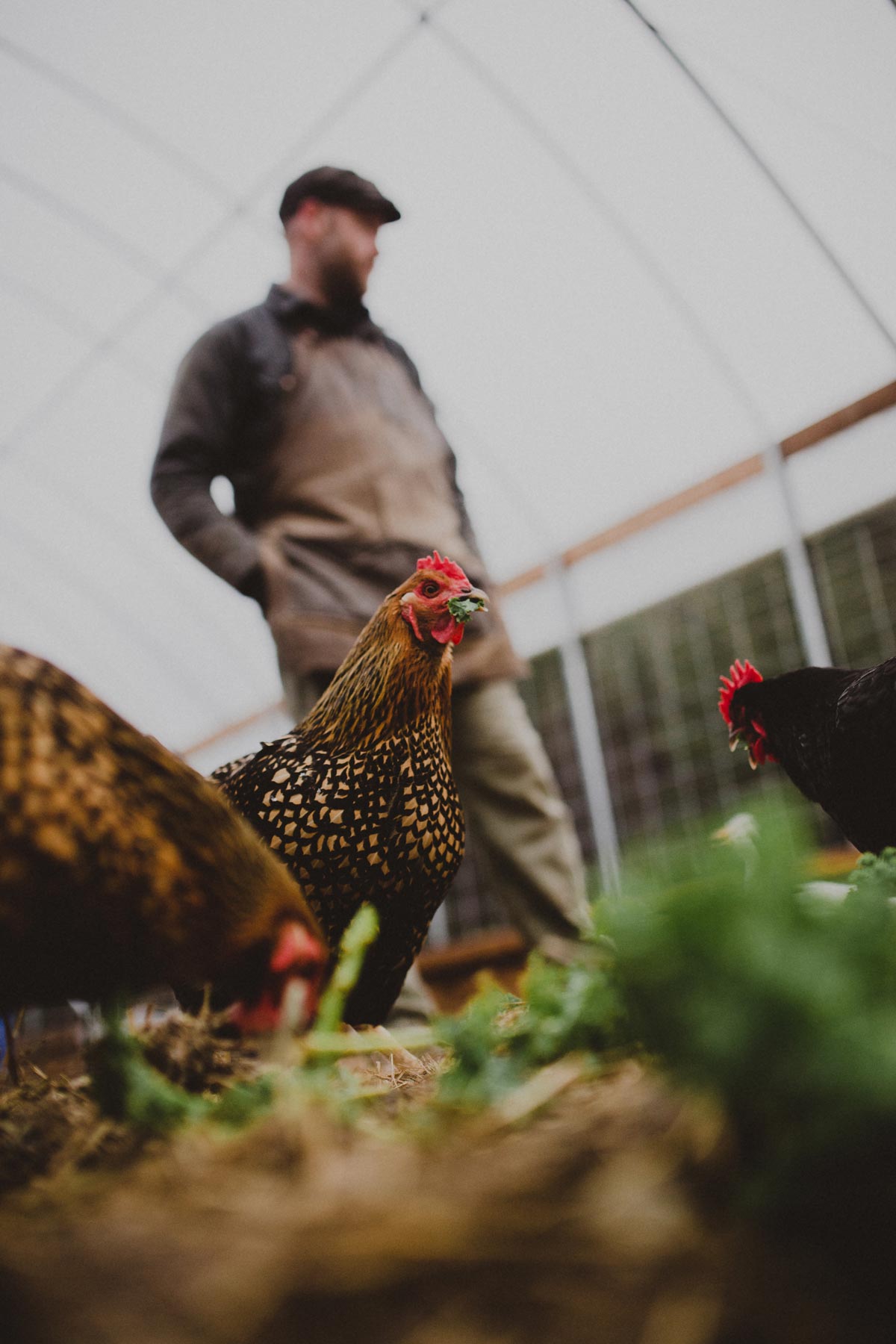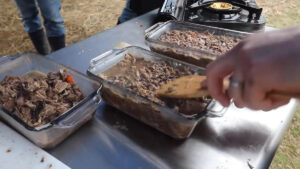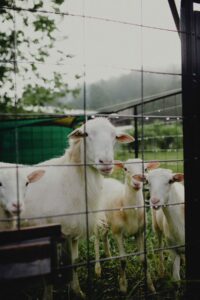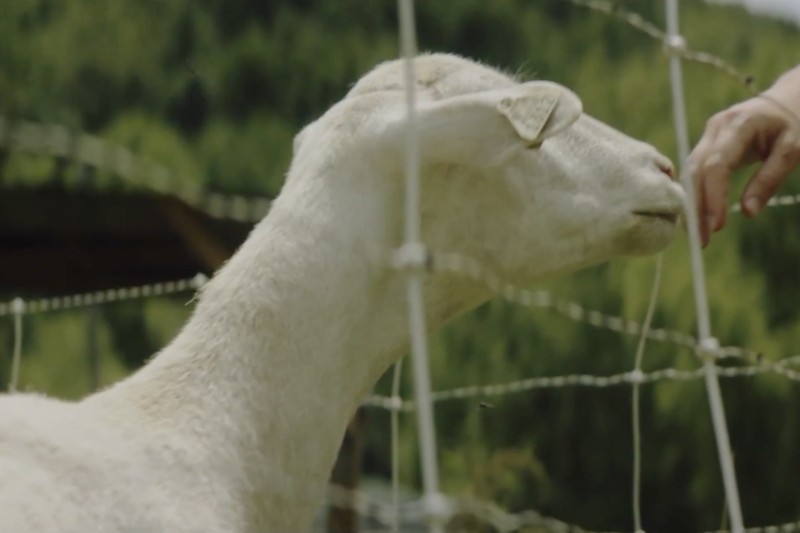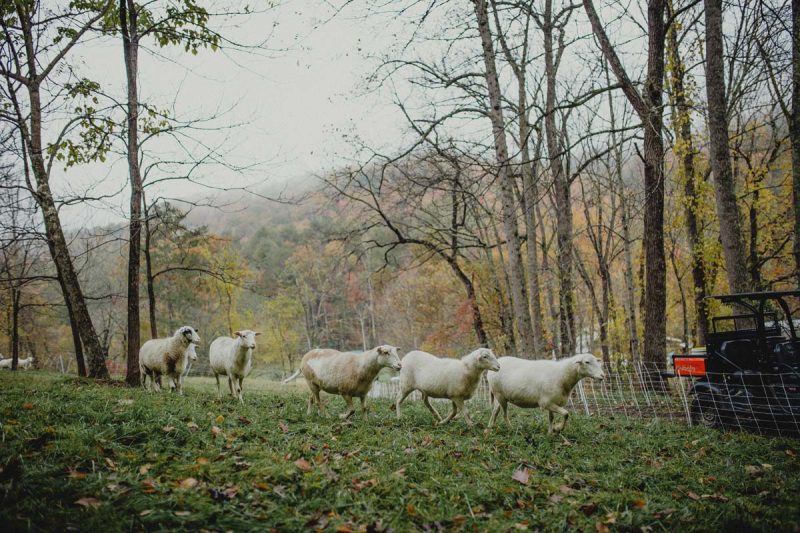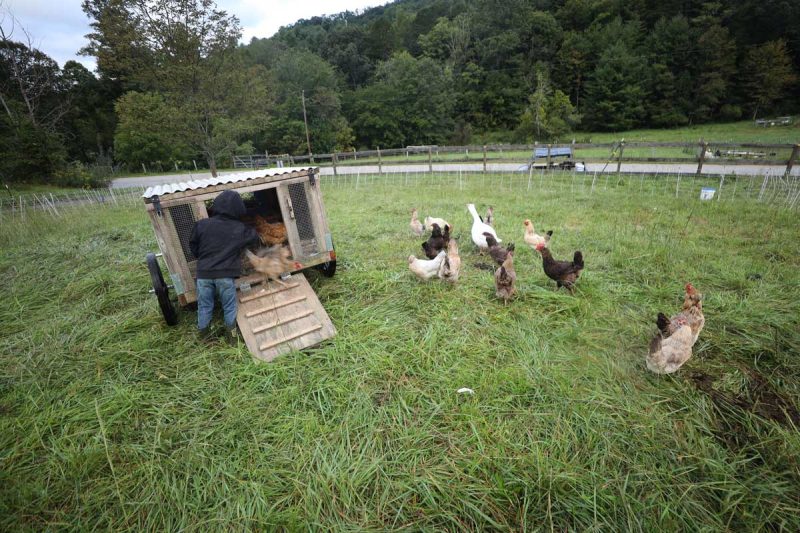In how to keep chickens happy, I want to share some basic tips on feeding, care, and shelter in winter and summer, whether it’s your baby chicks or adult hens.
We all want our chicken flock to be happy and healthy, and we especially don’t want to do anything to harm them.
How Do I Know if My Chickens Are Happy?
For all purposes regarding chickens, happy equals healthy! A happy chicken will run around making happy chicken sounds and laying eggs with strong shells and golden yolks on a regular basis.
Some people get creative with boredom busters such as chicken swings and shiny objects. These are great ideas, but if your chickens have their basic needs met, they are happy!
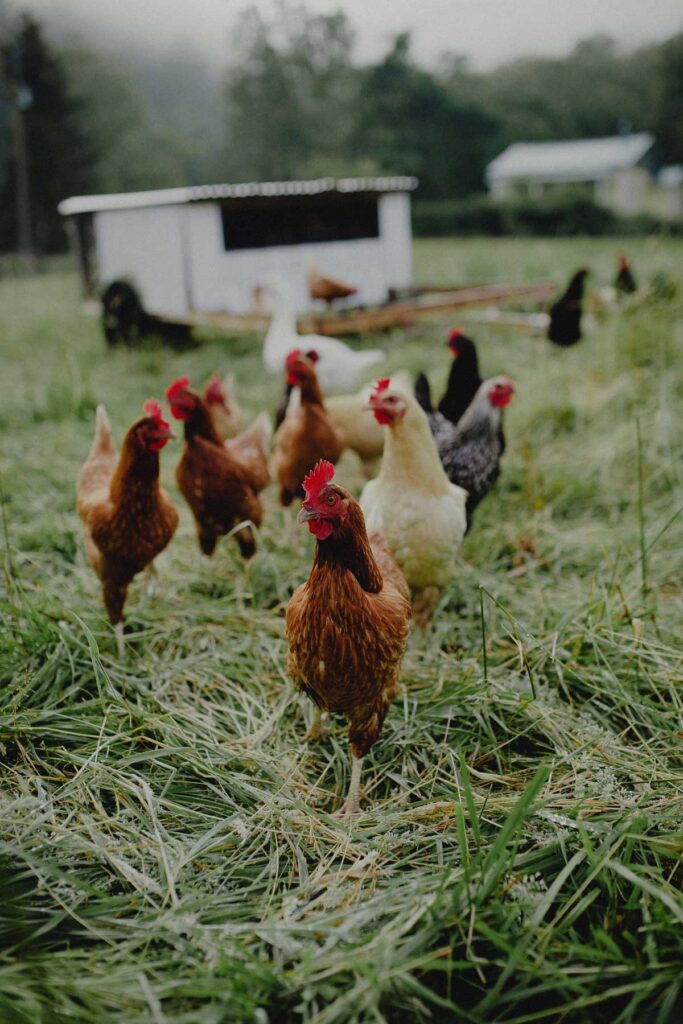
How to Keep Chickens Happy – Flock Size
Chickens love company. They depend on the structure of their flock to keep them happy. A lone chicken will be very unhappy. Two chickens are ok, but more are better. If you want fresh eggs daily, keep them happy by increasing your flock number.
Essential # 1 – Water
Out of all of your chicken’s needs, water stands out as the most important nutrient.
Just a few hours without access to water can critically affect egg production and 24 hours without water can cause a loss of eggs for 24 days.
Four adult chickens will drink about one quart of water a day. When it’s hot in summer, chickens may drink up to twice the amount of water in the heat. Winter adds the danger of freezing water and needs some special attention.
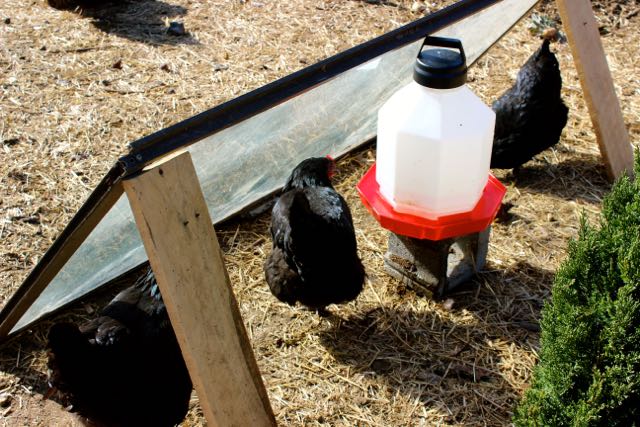
Tips for Keeping Your Chickens Watered
Keep the waterers clean. Chickens will drink more if it’s clean. It is A LOT easier said than done. Read through these tips to keep those chickens happy.
- Clean – Scrub the waterer daily or as needed.
- Elevate – Keep the waterer up on a platform or block, so the chickens don’t peck and scratch debris into it.
- Innovate – If you have a water source above the birds, try making one of these watering systems that provide an “everflow” supply.
- Hang Above – Hanging nipple waterers are also an option. It’s not a natural drinking position, but I imagine that it’s better than nasty water.
- Use a Vacuum – Vacuum-sealed waterers are my favorite, but there are a number of options available including automatic watering systems, hangers, and even pans or troughs.
In order for vacuum sealed waterers to function properly they need to be on level ground.
Pro-Tip: If level ground isn’t available, make sure the hole at the base points downhill. You’ll need to make sure the lid is on tight, and the o-ring seal is working well. If there’s any air getting in above the water level, it defeats the purpose of the vacuum effect, and the water will completely drain out.
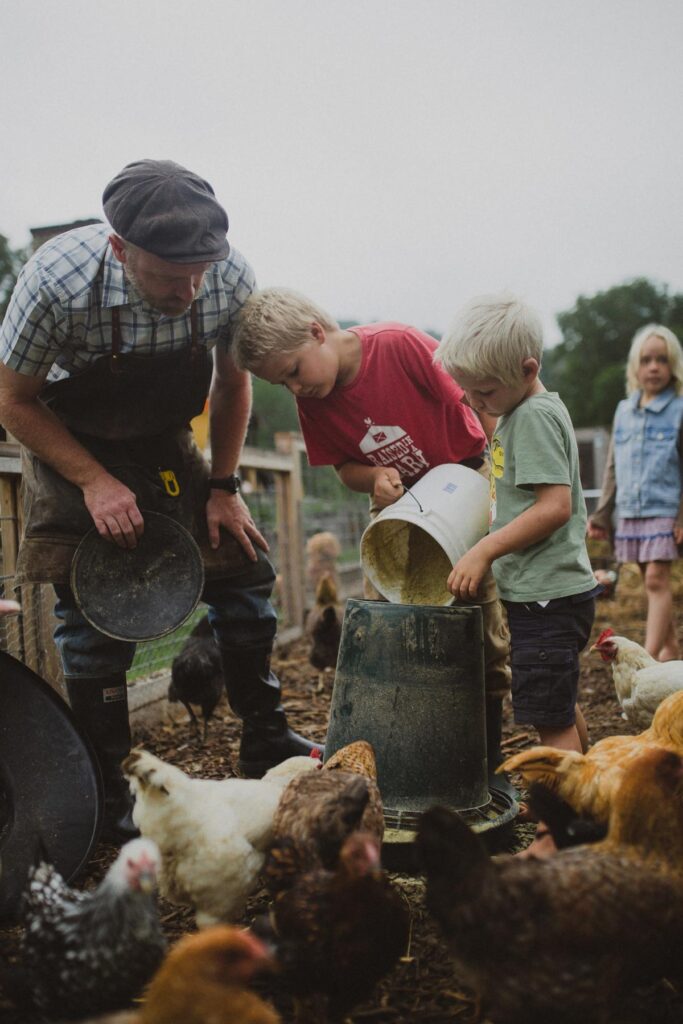
Essential # 2 – Food
To understand how we can meet our chicken’s food needs, let’s look at how they would meet their need for feed if they were free. In a completely free-ranging model, a chicken will naturally eat whatever it needs.
I once grew a batch of 25 Black Australorps for meat consumption by free ranging them. I provided a ration of starter feed until they were eight weeks old, and then they were completely on their own. When they went to the butchering table I was shocked. They weighed more and had a higher fat content than an identical grain-fed batch!
My experiment confirmed my notion that a chicken knows what she wants, and is very capable of getting it herself if given the choice. However, we can’t always give them a choice, so we’re responsible for bringing the food to them.
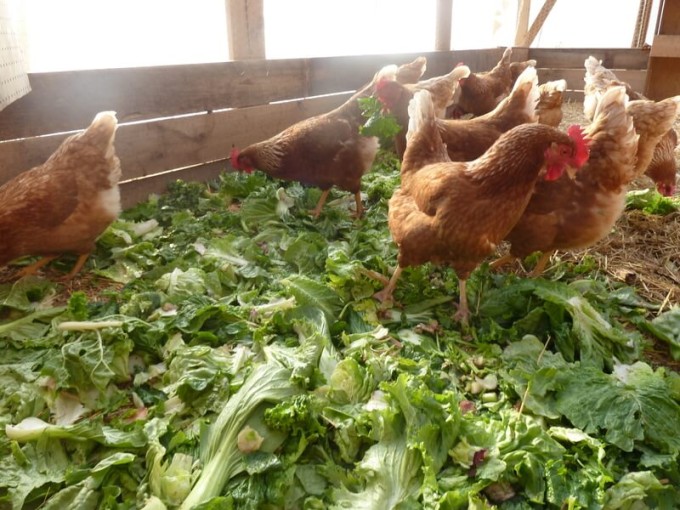
Their food consumption could be broken down into three kinds of food – plants, seeds, and animal proteins (bugs, worms, small rodents). Notice in all cases, all three food categories are live unprocessed feeds.
Given the success of the free-range model, it’s safe to say that we can start replacing commercial feed with more live feeds.
It’s arguable that manufactured feeds are scientifically balanced, but I imagine those balances have been set up for the vast majority of chickens that are in confined situations.
Keep in mind that pre-mixes lack significant live feeds. Often, the feed has been heated and the grains are crushed. Once grain is crushed, it begins to spoil and can have very little nutritional value by the time it’s three months old.
In addition, you’ll get more of what I call, “feed dust.” These are the fine grinds that the chickens don’t eat. The only way I’ve gotten them to eat this is to mix it with some milk or other liquid. Whole grains, on the other hand, are both alive and highly storable.
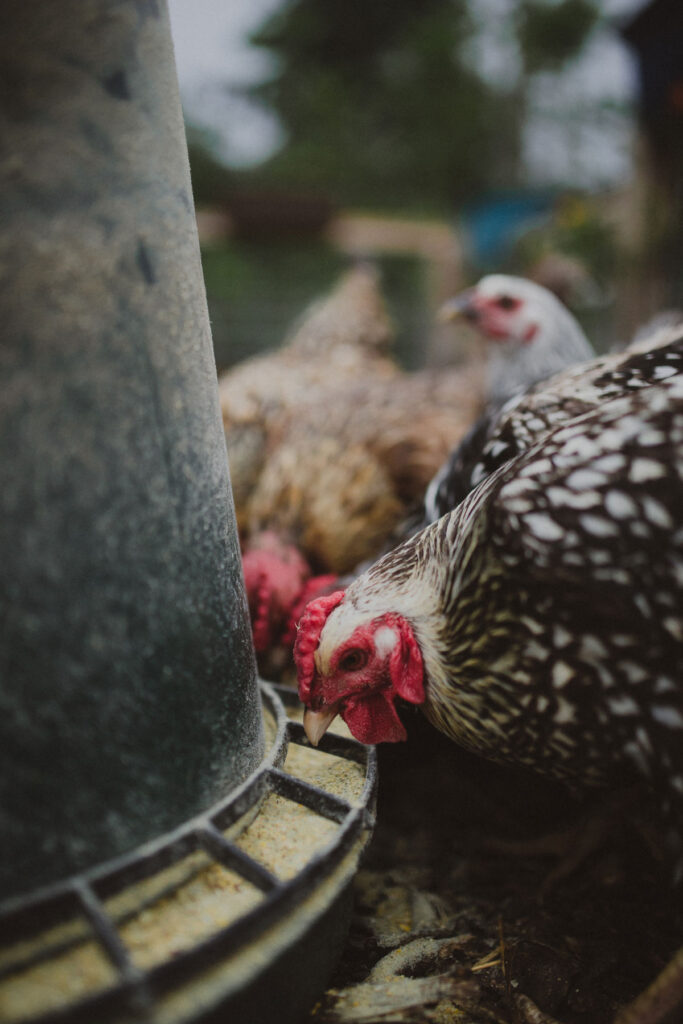
How to Transition to More Live Feeds
Use your current feed program as a base, and make sure you’re using the right feed for the individual bird.
- Starter Feed – 20% protein mix for chicks up to 6 weeks old
- Grower Feed – 16% protein mix for chickens six weeks old to 1st egg (about five-ten months)
- Layer Feed – 15% protein mix for adult chickens.
Provide calcium (egg shells or oyster shells) for their mineral needs. Regardless of your feeding program, you should always offer grit to help them break down their food.
Begin introducing more live feeds. For an exhaustive list of creative feed sources, read through how to feed chickens without grain.
Ration your feed to 1/3 pound of dry chicken feed. Simple rationing can prevent overeating and loss of material, and it’s best to feed first thing in the morning. Avoid free choice for several reasons:
- Expense – It raises costs as the chickens eat more than they need.
- Indulgence – Overweight chickens will have less egg production and could even lose their life. I learned a hard lesson when my chickens had access to too much food and had to put my fat hens out of their misery.
- Spillage – Chickens will waste more grain in spills, and rodents will begin eating the feed.
Start offering less commercial feed, so your chickens will work harder to source their feeds. In any given situation, I’ll slowly cut my commercial feed ration by about 10% a week until egg production is affected, and then come back up to the previous level and maintain that amount.
Make sure your chickens are getting enough to eat by tracking egg production and feel their crops after they’re in the chicken coop at night. If their crops are full at the end of the day, they are getting enough to eat.
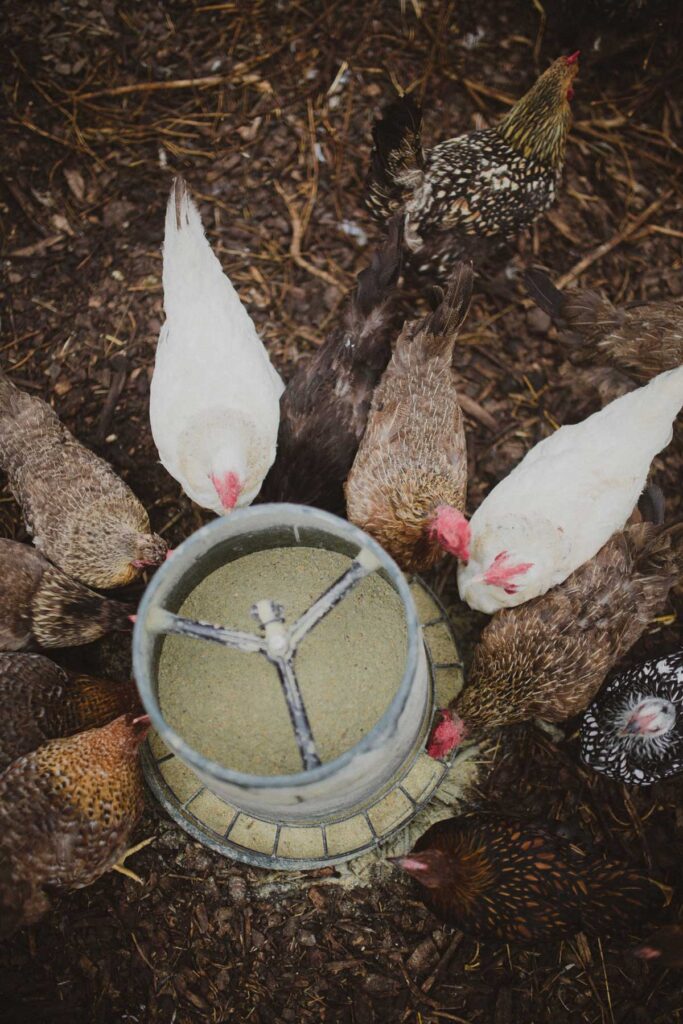
Things to Watch and Avoid
Avoid medicated feeds, as they are designed to prevent Coccidiosis. Coccidiosis occurs in high-stress situations caused by poor living conditions. If you practice many of the management techniques I describe, you won’t have to worry about this.
Prevent chicks from getting into adult pre-mixes. If you’re raising adult chickens and chicks together, don’t allow chicks to eat adult pre-mixes. These have extra calcium and phosphorus that could be harmful and unnecessary for young birds.
However, it will be nearly impossible to keep chicks away from the adult feed. I’d go with a grower mix for the entire flock while making sure to offer free choice egg shells and oyster shells for the calcium needs of the adults.
Then I’d offer fish meal, raw meats, and sunflower seeds to help the adults get the phosphorus boost they need. I don’t think the chicks will overindulge on these foods and the adults naturally know how much they need.
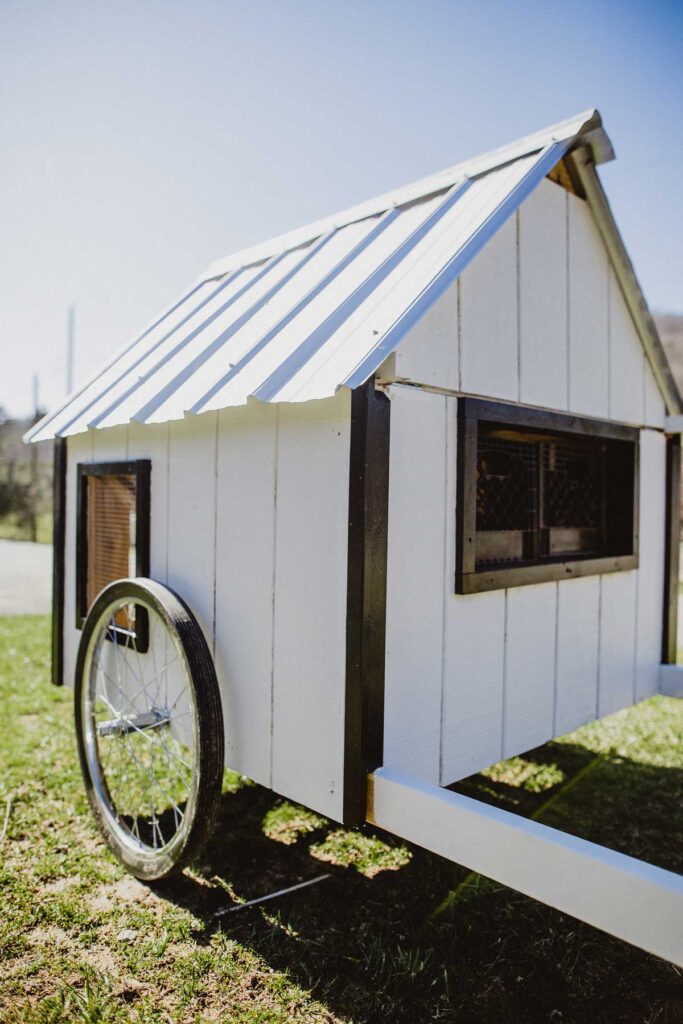
Essential # 3 – Shelter
Left in the wild, chickens would seek shelter in brushy “hideaways” or by roosting in aerial tree limbs. Providing housing is our ultimate tool for domestication and will confine and increase production making the chickens easily accessible.
It’s your job to provide adequate and properly equipped shelter that keeps your flock comfortable and protected from harsh elements like wind, sun, snow and rain.
There are numerous styles of chicken housing available, but some of my favorites include the garden-sized chicken tractor, the pastured poultry pen, chickshaw, coop and run with deep bedding, and the winter greenhouse.
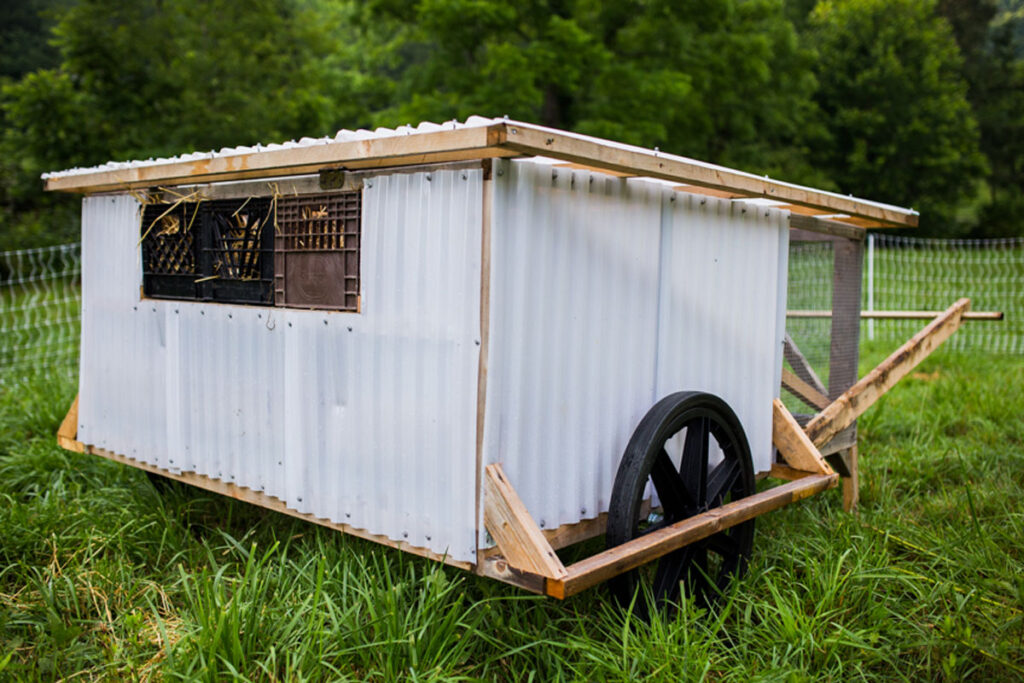
Tips for Providing Great Shelter
- Protection – Shelter from the major elements of wind, rain, sun and snow.
- Sunlight – Allow enough sunlight to sanitize and light your house, but not so much that there’s no shade. I shoot for about 25% open areas for the sun and air.
- Ventilation – Build proper ventilation, even in cold areas. Vents above the perches and open areas towards the sunny side should suffice.
Essential # 4 – Family Relations
As the caretaker of your chickens, it’s your responsibility to ensure a happy family. No doubt, you’ve heard the phrase, pecking order.
This phrase came from the observation of the chickens pecking activity to establish a social dominance order. For the most part, pecking orders are established quickly and easily without injury.
I can think of two categories where tensions are more of a potential -Working with Roosters and Mixing the Flock.
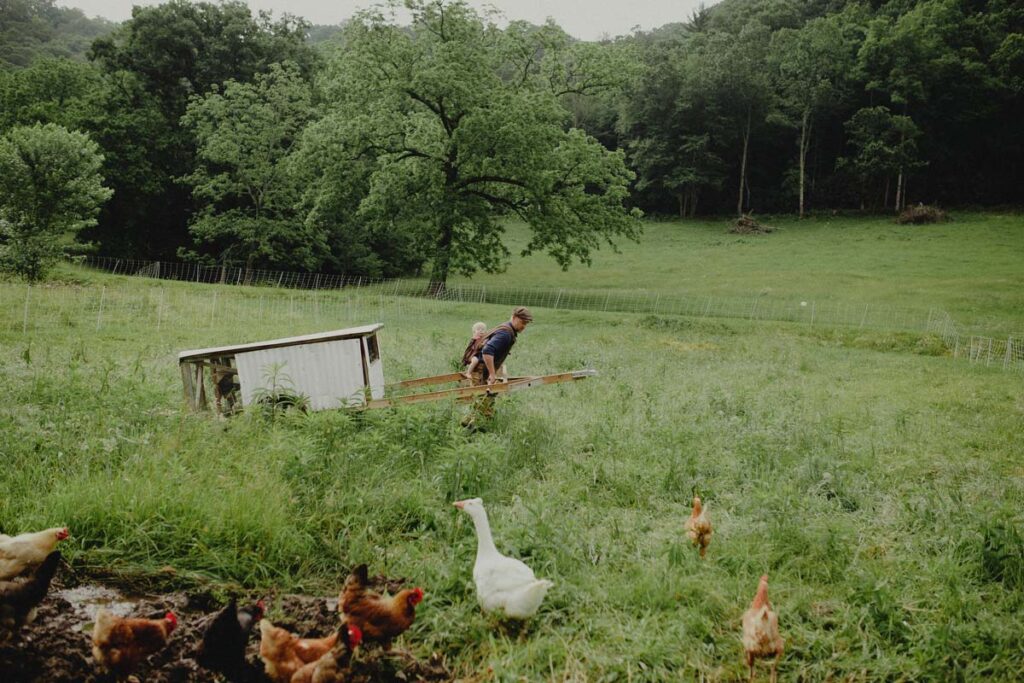
Tips for Working With Roosters
Roosters aren’t necessary for eggs, but they better complete the social structure, offer protection, help the hens find food, and they are certainly necessary for reproduction.
Plus they look so much better. What’s up with that? Have you ever noticed how in every other species, other than the human being, the males look so much better than the females?
Roosters can have favorites among the ladies and be too hard on them. In many cases, they wear off the feathers on their back, or in worse cases, injure them with their spurs.
In this case, it’s a good idea to provide adequate competition at approximately one rooster per eight hens. If balancing the flock with roosters doesn’t work, you can separate the roosters from the flock, or as a final resort cull the culprit.
Rooster attacks on humans are totally possible if they see you as a threat. Don’t take it personally, just show him that you can be trusted. My first reaction is to kick the rooster off when he flares up ready to fight but a better option is to quickly find some food and offer it to him.
Prevent children from taunting the rooster, even from outside the fence. I caught a visiting child poking the rooster through the fence with a stick and since then the rooster hasn’t liked children and for good reason.
One of my neighbor’s roosters flogged their daughter, lodging the shell of his spur in her scalp. There was no severe injury, but they did have to do minor surgery. I believe a rooster with that much aggression should be culled.
Use quiet and gentle movements around your roosters and give them plenty of space. Be careful if you have to catch a hen in the presence of a rooster. If needed, catch the rooster first and confine him, so you can safely work with the rest of the flock.
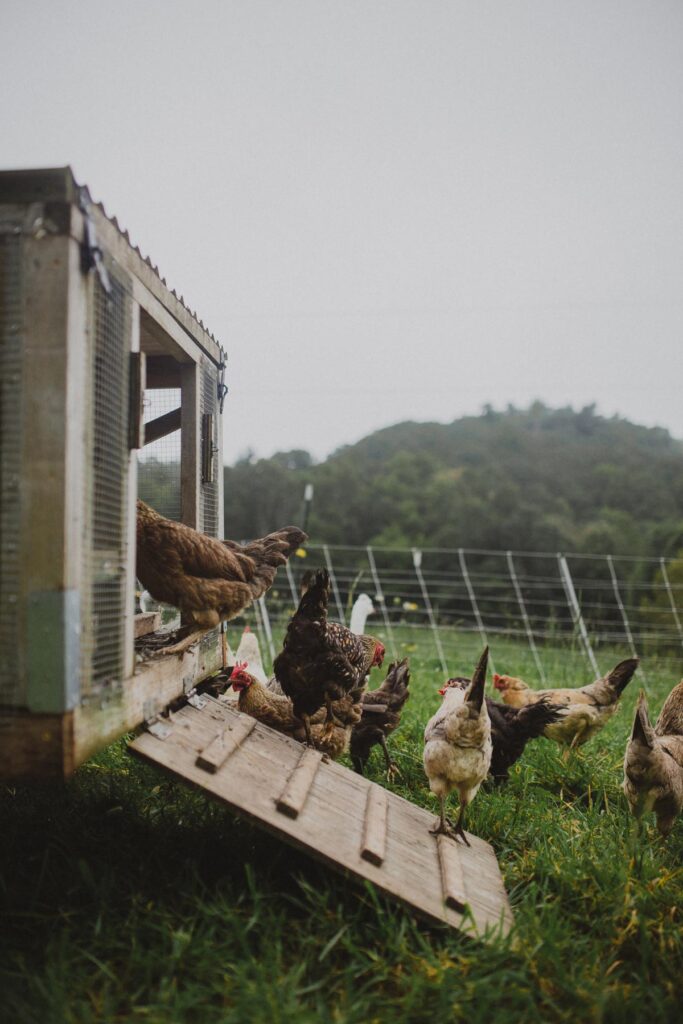
Roosters will fight each other when introduced if they are equally matched. One way to prevent that is to keep roosters of varying ages.
Introducing same-sized roosters can be a challenge. Try introducing them for a few days in cages or barriers before mixing them. If it’s clear they’re going to hurt each other, separate them again.
Know that roosters have to establish an order of dominance, and if they are very similarly matched, the fighting may continue until death. If it’s clear that your roosters are going to fight to the end, it’s better to cull the one you don’t want to keep.
Roosters will continue fighting until dominance is established. Even if you separate them, they will finish their quarrel when back with each other.
Provide plenty of room for roosters and hideouts to make it easy for the subordinate rooster to retreat. Hideouts could be something as simple as a pallet A-frame or compost bin.
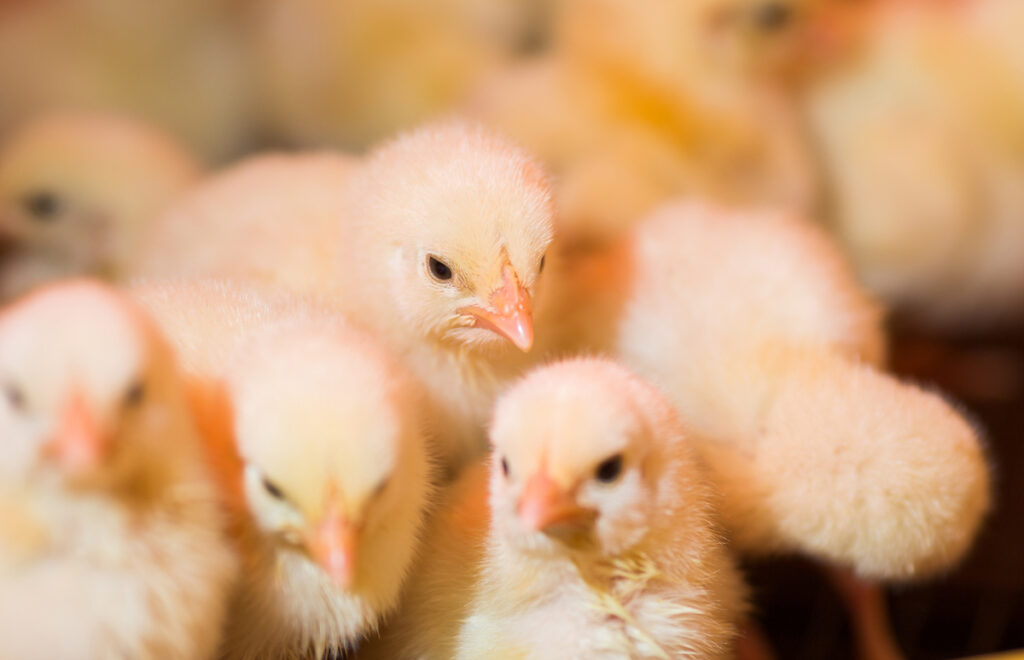
Tips for Mixing Age Groups
Exposing young chicks to adults could help build their immune systems.
- Space – Give plenty of space for newly introduced chickens. Hens will establish a pecking order but will be much less violent than roosters.
- Resources – Have extra waterers and feeders, so they aren’t forced to fight over access.
- Timing – When introducing young chickens to the flock, do so by placing them in the chicken coop at night while everyone is more sedated. In the morning, it will almost be as if they were always there.
- Confine – When getting new chickens in a free-range setting, you’ll need to confine them inside their chicken coop for about a week to teach them where home is.
- Control – Clip the wings of newcomers so they don’t fly the fence. They have no sense of home and won’t find their way back.
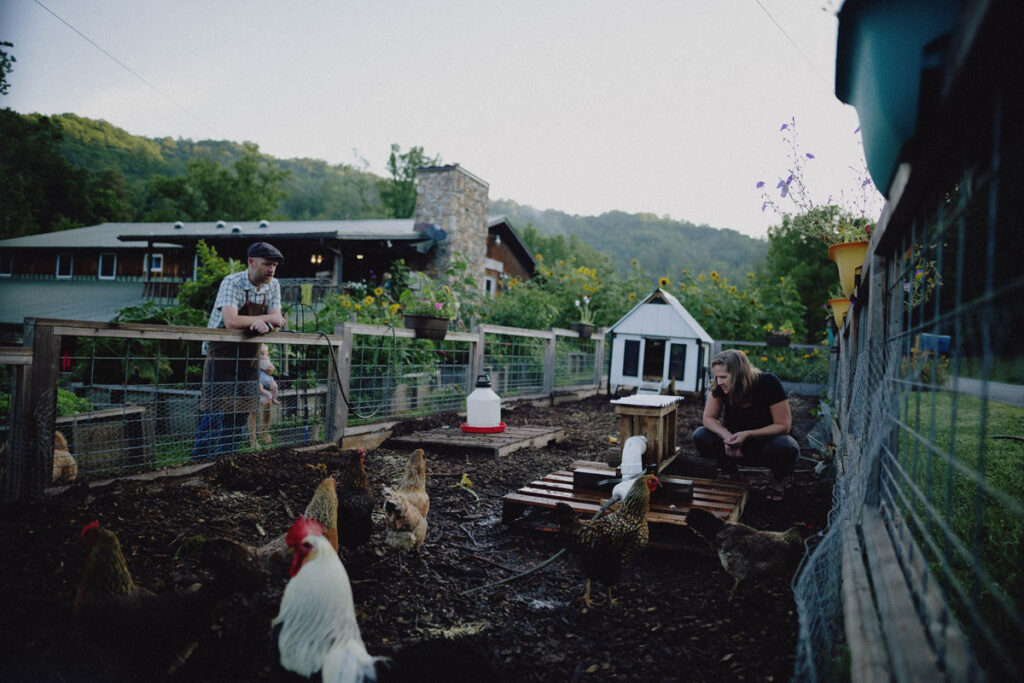
Essential # 5 – Health
If you follow the guidelines above, you’ve taken major steps for preventing any health-related issues from occurring in the first place. Prevention is the best medicine!
Basic Preventative Measures
- Feed and Supplements – Provide a wide variety of live feeds and supplements of calcium and grit.
- Dust Boxes – Provide a dry dust box at all times. Chickens love a good dust bath!
- Clean Water – Have clean water available at all times.
- Space – Give your chickens at least three square feet of space inside and outside.
- Ventilation and Protection – Make sure your coop is well-ventilated and offers protection from the elements while maintaining openings towards the sun.
- Roosting Space – Make sure you have at least nine inches of roosting space per chicken, so they can get off of the wet, manured ground at night.
- Bedding – Use deep bedding in non-mobile coops of at least eight inches and add more carbon material regularly.
- Boost Immunity – Implement the “Holistic Trinity” of Garlic, Apple Cider Vinegar, and Diatomaceous Earth. Use a natural water boost and fermented foods for day-old chicks.
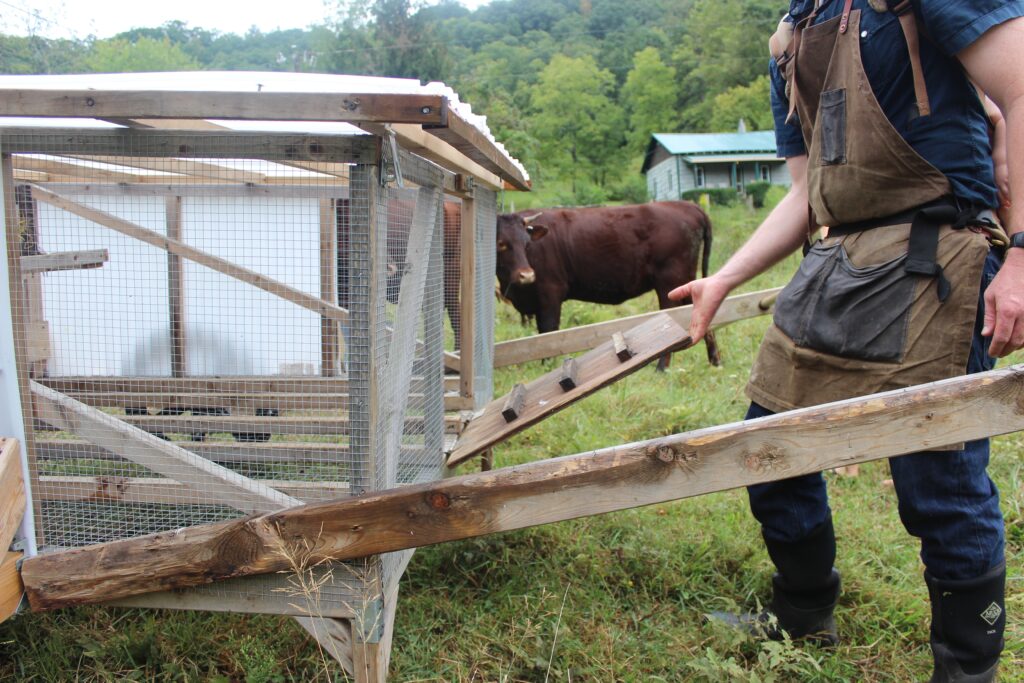
Essential # 6 – Protection
If you’ve ever seen another chicken mess with a mama hen’s chicks, then you’ve seen how she can go from a peaceful yard ornament to a puffed-up ball of madness. You just don’t mess with a mother’s precious babies!
Just about everything will eat a chicken and/or its eggs – hawks, eagles, owls, possums, skunks, domestic and wild cats, dogs, raccoons, bears, pigs, rats, coyotes, foxes, weasels, bobcats, wolves, snakes, and in some cases, thieving people.
In all cases, predators can be broken down into three categories – Aerial, land or egg eaters. Learn more about what killed your chickens here.
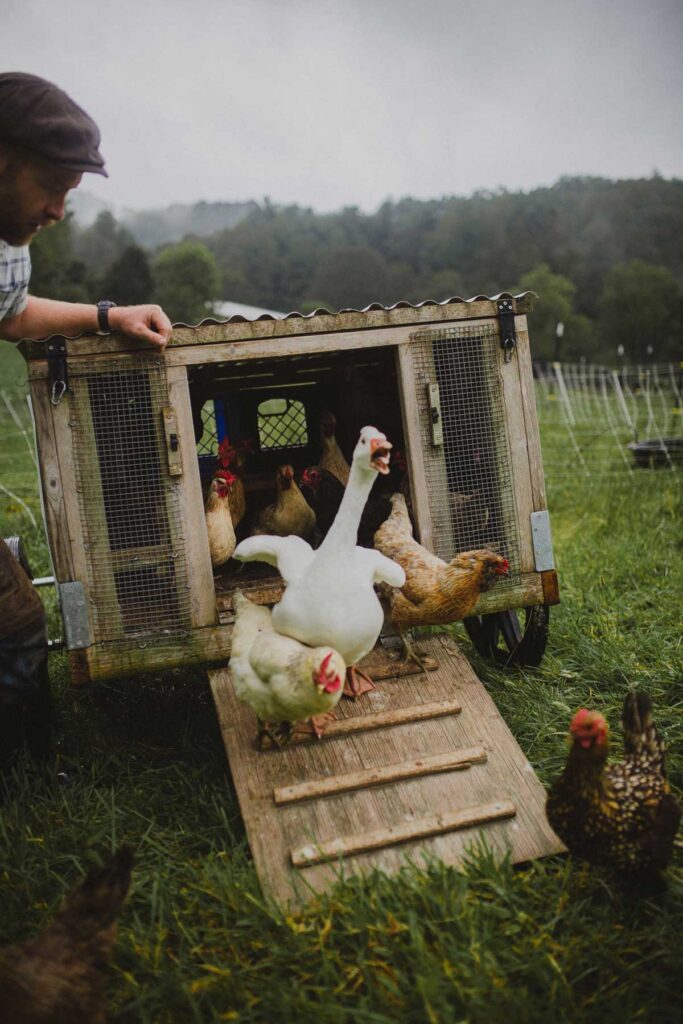
Tips for Protecting the Flock
- Close the Door at Night – The vast majority of predator problems will be eliminated by simply closing them in securely at night and not letting them out until daylight. Learn more about protecting chickens from predators here.
- Use Chicken Tractors or Similar – Keep small chicks in chicken tractors or under similar protection as they are the primary target of aerial predators. I’ve had young free-ranging chicks picked off rapidly despite the mama hen’s presence. Get my chicken tractor plans here.
- Secure Housing – Keep housing secure and keep your openings no larger than one inch.
- House Adults if Needed – In the event of aerial predator attacks on adult chickens, consider housing them for a few days to encourage the birds of prey to move on.
- Encourage Crows – We had an epic hawk problem a couple of years ago and finally found our relief with crows. Believe it or not, the smaller birds don’t like hawks in their territory and will drive them out of the area! Crow problems have been so minimal I welcome their presence for keeping the hawks at bay. I have no idea how to encourage crows, but thought it would be worth the consideration.
- Use Electric Net Fencing – This will keep out all land-based predators besides humans. Learn how to set up an electric fence here.
- Guard Dogs – Dogs can protect the flock from all predators, including some human thieves. Thieves might not be a consideration for many, but for my friend in Africa a guard dog, or a human guard is an absolute must.
- Guns or Traps – If you’re shooting a domestic dog, I suggest shooting it with a BB gun as laws vary from county to county.
- Routine Checks – Check eggs regularly or move your coop often, if you have a snake getting them.
- Implement a Guard Goose – It’s critical to raise a gosling with chicks, so it will learn to bond with chicks. Just get one goose. Otherwise, they’ll be distracted by other geese and won’t bond with the chicks or pay attention to guarding them. Your goose can be kept in a fence with the chickens or allowed to free range. They can free-range for all of their feed needs.
- Prevent snakes – By eliminating rodents, keeping the area clean and reducing hideouts, snakes won’t find your coop attractive.
- Use your Rooster – Remember roosters can be great natural guardians of the rest of the flock.
- Keep an Eye on your Cats – Watch your cats as they will eat young chickens. Provide retreats for cover from aerial predators
- Use Distractions – Hang shiny objects in the wind like tinfoil and CDs to scare away aerial predators.
- Go Deep with Fencing – If you have a permanent fence for your chickens bury 6” or so in the ground to prevent digging predators.
- Clip Wings – When you clip the wings it keeps your chickens in the fence and away from predators.
Note: Kill wild predators very sparingly as you’re messing with the natural ecosystem. A sure-fire rule of nature is that if you eliminate one predator from the area, something else is likely to move in. Without foxes, raccoons, wild rabbits and other rodent populations drastically increase.

Essential # 7 – Take Care of Yourself
You’ve heard the saying, “If mama ain’t happy, ain’t nobody happy.” Whether you’re a man or a woman, you’re a mama to your chickens. You’ve got to take care of yourself before you can take care of others.
See to it that you eat well, get plenty of rest, exercise, enjoy your job, and have fun with friends and family. This self-care will go a long way to keeping you on top of a good management program.
More Posts You May Enjoy
- How to Feed Your Chickens Without Grain – 20 Ways to Cut Costs 100%
- Using Chickens to Create, Turn, and Spread Compost
- Best Herbs for Chickens – How to “Herbify” Your Chickens Like Lisa Steele
- Using the Permaculture Approach for Your Chicken Flock
- ChickShaw – A Mobile Chicken Coop One Person Can Easily Move
- Chicken Coop Ideas – 5 Brilliant Methods that Work
- Five Stages for Sucess With Breeding Chickens
- Backyard Chickens – How to Get Started
- How to Butcher a Chicken
- Raising Meat Chickens
- Protecting Chickens From Predators
- What Killed My Chicken? – How to Know

